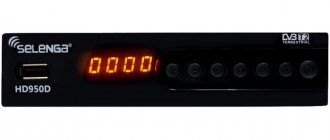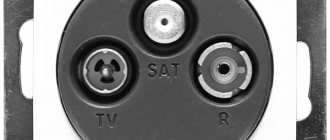Work to increase the bandwidth and resolution of analogue video surveillance systems has led to the creation of several new high-definition standards. The most common among them are AHD, TVI and CVI.
These standards are incompatible both with the PAL analog format and with each other. However, in case of upgrading the video surveillance system, the user will not have to change all installed components. The AHD, TVI and CVI standards operate via the same coaxial cables that are used in analog modules. Thus, during modernization it is enough to update the cameras and recorders.
AHD
This standard implements a partial departure from the PAL format framework. The AHD signal is identical to the analog signal and has the same configuration and parameters as the full classic television video signal (abbr. PTVS). However, there are significant differences in the layout:
- frame-by-frame progressive scanning. This means that the AHD standard transmits full frames at 25 fps;
- increased number of vertical display elements (up to 720 lines with 1280 points each). This made it possible to increase the frame duration to 40 ms and the upper frequency to 16.84 MHz. As a result, at the receiving end the signal is very close in geometric parameters to a digital HD signal;
Essentially, AHD is a modernized analog standard using frequency modulation. This technology allows you to transmit a signal up to the Full HD 1080p level without significant losses and distortion over a distance of up to 500 m within a standard RG-59 coaxial cable.
In other words, using AHD recorders and cameras, you can organize analog video surveillance with the quality of IP systems, but without the need for complex setup.
For the history of how CVBS works
A few general words about how analog signal transmission over a coaxial line works. The video signal is transmitted in horizontal scan lines, or lines. Each line consists of an active video part and a horizontal blanking part. The active part of the video contains information about the brightness and color (chrominance) of the image. Brightness information is the instantaneous amplitude at any given time. Color information is added at the top of the luminance signal and is a sine wave with a color pattern that is determined by the specific phase difference between the signal and the reference phase. The amplitude of the modulation is proportional to the amount of color (saturation), and the phase information denotes the hue of the color. The horizontal blanking portion contains the horizontal sync pulse. The horizontal part of the signal blanking is located in time so that it is not visible on the display system screen (monitor). Despite the fact that the first analog systems were used for video surveillance, analog signal transmission technology very quickly began to be used in television. Although at first there was not much difference, before devices were developed that allowed video recording, the image from the video camera went directly to the monitor. Later, with the advent of VCRs, video surveillance spun off from television and the term Closed-Circuit Television (closed-circuit television system or simply video surveillance system) appeared. Video surveillance has become a separate industry and developed according to its own laws.
HD-TVI
A new standard for analogue video surveillance, which allows, unlike the PAL standard, to transmit a signal with a resolution of up to 1920x1080 pixels.
The HD-TVI format was invented by Techpoint, although on the Internet the authorship is often attributed to HikVision. The standard is open, so it can be used by any manufacturer of video surveillance equipment.
HD-TVI is based on a modified signal generation and transmission technology. The standard involves complete separation of the chrominance and luminance video signals, which avoids the accumulation of interference and provides a clearer image.
In addition, TVI implements a signal pre-processing algorithm followed by the use of quadrature amplitude modulation. This makes it possible to transmit video over a regular coaxial cable, which has a characteristic impedance of 75 Ohms.
Appearance
The box arrived dented, but the device was not damaged.
The kit includes the converter itself, a power cable (miniUSB) and instructions. Which is more of a description than an instruction.
On one side, the inputs are a composite video signal and two audio channels.
On the other hand, there is an HDMI output.
On the third there is a miniUSB power connector and a 720p/1080p switch.
HD-SDI
This non-analog standard is based on the idea of using coaxial cable lines to transmit high-definition digital signals. SDI has an important advantage over IP systems: it eliminates any delays in video signal transmission associated with channel limitations or time spent on image processing in the video camera itself. This advantage is very important for systems with high-speed PTZ cameras, since even a second delay in displaying an event is critical for them.
The transmission range of video signals in HD-SDI systems depends on the type of cable used. In this case, the signal from the video camera to the recording equipment is transmitted with virtually no loss of quality. The image does not reach the recipient only when there is critical attenuation in the transmission medium. Distances declared according to the HD-SDI standard:
- along RG 59 - 50 m;
- along RG6 - 100 m.
Image formats
There are several image formats that have been used in both television and analog video surveillance systems: , , . First of all, the differences between them are in the number of scanning lines per frame, in the scanning frequency and in color modulation methods. Video cameras for CCTV systems used two formats / and no format.
Why is the vertical format in lines, and the horizontal format in pixels?
The horizontal format is associated with the direct resolution of the video camera, while the vertical format (number of lines) is unchanged and is determined by the analog signal scanning standard (576i for PAL, 480i for NTSC). For an analog signal, frame resolution is determined by interlace scanning (in the diagrams it has the index i) and is measured in TVL (television lines). While the frame resolution in a digital signal is determined by progressive scanning and is measured in vertical pixel lines (index p). A quantitative assessment of frame resolution in TVL is obtained from the number of effective pixels of the video camera matrix to the aspect ratio of the frame (for example, 4/3 for SD resolution), but also depends on the channel bandwidth and the quality of the optics, so this relationship is nonlinear. If we translate it into pixels, this makes the analog resolution of the video camera more understandable, then we get something like this ratio: Compatibility
And the biggest plus of the old analogue, something that the HD analogue (HD-TVI, HD-CVI, AHD) cannot yet achieve, is full compatibility with various display systems (monitors, recorders, video capture cards, matrix switchers, etc.), you don’t need to constantly keep in mind whether my equipment from different manufacturers will be compatible, or whether I can stream the video camera directly to the monitor.
Simple installation and low-cost maintenance
CVBS systems worked out of the box and did not require complex configuration and highly qualified maintenance personnel.
Low resolution
Since the resolution of matrices in video cameras has crossed the megapixel mark, analogue has ceased to be in the top.
Interference
The composite signal is subject to interference.
The transmission range of a CVBS signal is only about 300 meters compared to 1200 meters from HDCCTV, which is pennies. The first analog television system was developed (yes, this is the same person who invented it) in 1925-1926
and was called "Far Vision".
Academician A.F. Yoffe suggested that Termen work on Far Vision, since since 1921 the possibility of transmitting and receiving images over a distance had already been studied and researched. As a result, Theremin developed 4 versions of the television system, which included image transmitters and receivers. The final version of “Far Vision” stood in K.E.’s office. Voroshilov and through it it was possible to observe the Kremlin courtyard; in this version of the system, interlaced scanning of 100 lines was used. Another early video surveillance system was installed by the German company Siemens AG at the missile test facility in Peenemünde, Germany in 1942
, this system allowed observation of the launch of V-2 rockets.
In the United States, the first commercial closed circuit television system appeared in 1949
under the name Vericon.
Very little is known about Vericon, for example, it was advertised as a system that did not require government permission to install. The earliest video surveillance systems did not have the ability to record and store information, i.e. Overall it was just a monitoring system. The development of reel-to-reel media made it possible to record the transmitted image. But this required manual replacement of magnetic tapes, a labor-intensive, expensive, and unreliable process that required an operator to manually wind the tape from a reel through a tape recorder onto an empty reel. Because of these shortcomings, video surveillance was not widely used. In the 1960s,
the Japanese released commercial video recorders (VCRs), which subsequently made recording and erasing information in video surveillance systems much easier, and allowed the field to develop.
Later, digital multiplexing was developed, this technology gave video surveillance such goodies as simultaneous recording of several cameras, timed recording, and motion detector recording. In general, the popularity of CVBS video surveillance systems has been growing. CVBS systems used an SD (Standard Definition) signal or a standard definition television signal based on the 625/50 or 576i (PAL, SECAM) and 525/60 or 480i ( ) resolution standards. In general, standard definition can be both analog and digital signals. SD has a 4:3 aspect ratio. In 1996,
Axis Communications developed.
It will take 10 long years for IP video surveillance to begin to conquer the market. In the late 2000s,
HDTV appeared (HD or High Definition is a high-definition television signal), the first was Japan, which developed and began producing products that support a resolution of 1125 TVL (both video cameras and televisions), the state-owned Japanese television company NHK launched HD -broadcasting since 1985. Compared to SD, HD resolution formats use a 16:9 aspect ratio and, of course, increase the number of horizontal pixel lines per frame (1280x720, 1440x1080 or 1920x1080) for the digital signal. Digital standards for high-definition signal transmission have been approved (by the Society of Motion Picture and Television Engineers) since 1993.
HD resolution came to video surveillance with IP technologies in the early 2000s, and later, in 2010, returned with the analog HD-SDI format.
in the 2000s
, one of which led to the rise of CBVS, the other of which contributed to its decline.
First, the first digital video recorders (DVRs) appeared; their key feature was the storage of video archives in digital form. And in modern DVRs this principle remains unchanged. Thanks to digital recording, DVRs were supplanted (after all, their maintenance and the constant need for recording cassettes were inconvenient and expensive). And secondly, the development of technologies for monitoring video surveillance systems through . This made it possible to transmit images over local networks and the Internet. The first decade of the 2000s
can be called the heyday of analog video surveillance systems.
IP video cameras were still expensive, as was video archive storage. The main players in the analogue video surveillance systems market were large Western and Japanese manufacturers, there were practically no Chinese, and now well-known companies such as Axis or Milestone were “start-ups” at that time. Since about 2008,
IP video surveillance systems began to use a codec, which has reduced the cost of storing video information and provided IP systems with a decisive advantage over analogue ones.
This is not to say that nothing has happened in the world of analog video surveillance systems. Around 2009,
Sony released processors and CCDs called the Sony Effio Processor.
(Enhanced Features and Fine Image) Processor translates as “Processor with Enhanced Features and Fine Image.” What was really great was that Sony, with this new technology, was able to increase the resolution of the sensor matrix to 700 TVL for the 960H sensor (960 is the number of effective horizontal pixels of the matrix). There were several generations of processors: Effio-E, Effio-S, Effio-P, for each they produced matrices with a resolution of 960H and 760H. This allowed analog video cameras to approach the megapixel mark. Since 2009,
cloud technologies for storing video archives began to develop.
However, they failed to achieve great popularity. The reason was bandwidth limitations and weak cloud VMS capabilities. Since 2011 ,
vendors of IP video surveillance systems have realized that they need to develop video analytics and VMS capabilities in general.
In 2010,
the analogue made an attempt to return to the market of video surveillance systems with the high-definition HD-SDI format.
Which, however, did not become popular. Since 2012,
IP video cameras have become not only an image transmission device, but also have the ability to store video archives on an SD card, a slot for which most IP cameras have acquired.
But this did not receive much development due to problems with the reliability of SD memory cards. In the same year, other HD-analogue image transmission formats (HD-CVI, HD-TVI and AHD) appeared, and in 2014 their development began by Korean and Chinese vendors. All this led to the fact that, according to statistics from integrators, from 2014 to 2018, the costs of implementing analog CVBS systems were reduced to 0%. In 2015,
smart codecs appeared, such as Zipstream or H.264+, which allow you to reduce the amount of data, optimize the transmission of the video stream and its storage.
And in general, during this period, manufacturers switched to IP development, including increasing megapixels in video camera matrices. In 2021,
equipment supporting the new codec appears on the market, and all major manufacturers are releasing IP cameras with its support.
In 2021
There are a large number of startups in the field of video surveillance around the world.
The industry is developing in several directions at once, this is not only increasing the capacity of video cameras, video recorders or server technologies, but also increasing network security, cybersecurity and data protection, the development of video analytics and AI, the transition of video analytics to cameras, new form factors of video cameras for robotics and surveillance from drones , . And in 2021
, in connection with the novel coronavirus pandemic, another trend has appeared in the world: high-sensitivity thermal imaging cameras capable of recognizing temperature changes in fractions of a degree for mass screening of the population in crowded places and identifying potentially infected people.
Today, there are a huge number of CVBS-based CCTV systems deployed around the world and still in use. The average service life of a video surveillance system is 10-15 years; these systems were put into operation between 2010 and 2021 and are now reaching their end. It's difficult to predict exactly (maybe someone will keep such a dinosaur in their dacha), but it is likely that by 2040 there will not be a single CVBS device left in the world. Despite a number of advantages, the technology itself for transmitting a composite signal over a coaxial cable has outlived its usefulness. It has too many disadvantages, especially against the backdrop of the rampant development of systems based on digital signals. 960H matrices are a ceiling that analogues cannot overcome. The short transmission distance of video, the susceptibility of the signal to interference, which led to the decline of this format.
Differences between IP, HD-SDI and analogue video surveillance standards
Analog video surveillance systems are characterized by low price, absence of delays and long cable lengths. You can use a household TV receiver for viewing. Main drawback: unsatisfactory video quality.
IP systems allow the use of LAN and SCS network infrastructure. There are no restrictions on the number of megapixels. The camera can be connected directly to the Internet. Among the disadvantages:
- delays in signal transmission due to the use of IP networks;
- limit on the maximum cable length (90 m according to SCS standards).
The HD-SDI standard allows you to upgrade your analog video surveillance system to obtain HD quality images. In this case, you can use existing networks based on coaxial cable. Unlike IP systems, the HD-SDI standard has no delay in signal transmission. However, it also imposes restrictions on cable length, as well as requirements for the cable itself, connection and connectors.
Conclusion
If you need a CCTV system, the question is not whether to use digital or analogue, but when and to what extent.
A video surveillance system is a technically complex system, the total weight of which is greater than the sum of its components. And if you don’t want your video surveillance system to become a useless waste of money, you don’t need to decide the question “digital or analogue” at all; you first need to formulate the goals and tasks that you want to solve, assess the conditions under which this problem will have to be solved. And for this task, finding the optimal solution, but whether it will be digital or analog is not the most important question.
Finding the optimal solution for organizing video surveillance sounds simple, but in life it is a quest, the video surveillance market is highly competitive (if you don’t cheat, you won’t sell), we personally counted 7 relatively honest ways to take money from the video surveillance market. So the main thing is not “analogue” or “IP”, the main thing is that under the guise of equipment you are not sold useless scrap metal.
Entrails
She doesn't even have neon inside.
The central chip is called Macro Silicon MS1858
The MS1858S is a single chip for analog CVBS/S-Video to HDMI, which integrated with 9-bit ADC of video and advanced HDMI 1.3 transmitter. MS1858S consists of 3D video decode, high performance OSD, DMC, video scalar and high speed analog switch. It also provides frame rate conversion and progressive scan conversion with de-interlace.
Let's start with the basics: RGB
Believe it or not, the human eye can only distinguish between 3 primary colors: red, green and blue. We see other colors of the spectrum and their shades only because our brain thus perceives various mixtures of primary colors available to the eye. These can be called “imagination pigments” (Sorry for the joke).
Since the eye distinguishes only 3 primary colors, the transmission and display of these three colors is sufficient for the operation of the video system. This principle is called RGB. The video camera generates an image directly in RGB format, and then the RGB signal is played back by the TV or video. By changing the intensity of primary colors, you can create the feeling of any color in the spectrum. And absolutely natural images will appear on the screen!
What is component (composite) input used for?
Of course, in order to fully delve into the described topic, you must first know about all the possible components of the design. The fact that the connector itself consists of three components should not be forgotten. Direct information about them:
- The first of the elements is called one symbol, that is, Y. It is with its help that the difference between the brightness level of the provided image and synchronized pulses is transmitted. As for the hole marking, it is a circle with a yellow-green tint, which can easily be found on the panel.
- Next is Pb. It provides the opportunity for the process of distinguishing the brightness and directly the blue tint of the color gamut. Speaking about the designation, it is worth noting that it directly corresponds to the marking of the recess.
- And the last, bequeathing connector, which is marked with two letters Pr. Thanks to it, the difference between the red level and brightness is transmitted. Just like the previous object, it looks appropriate: the color exactly matches the described purpose - the use of a red appearance.
ATTENTION! In some models, you may notice that different symbols are used to mark the hole. If you are a user of exactly the described design, then, most likely, the input is indicated by one letter - U. However, apart from changing the marking, nothing else changes: neither the purpose nor the features of the device.
Simply put, the function itself serves directly to improve the quality of the records being viewed.
IMPORTANT! This input allows you to receive signals not only from DVD players, computers, phones, but also from digital satellite receivers and digital television decoders.
Consequently, the indicators will be converted into the necessary parameters that are supported by this or that invention. Usually they are conventionally divided into interlaced and progressive. The first of them is needed to interact with the total number of different broadcasting systems. The second is for standard high-definition TV devices. In addition, they can be used to connect third-party devices directly to the TV.
Thus, each owner, who knows about the advantages of the provided unit, has the opportunity not only to watch ordinary everyday programs on television channels, but also to independently organize a holiday with a full-fledged home theater.
REFERENCE! The described type of interface can be used practically with all the equipment of modern life.
Moreover, if we compare the described unit with S-video or with composite input, where multiplexing is used directly, the first of them provides higher definition (namely, up to 270 TVL).
Content
- Let's start with the basics: RGB
- Beware: Bandwidth
- So what does all this mean?
- If you have the option, use component video
- Component video: progressive or interlaced?
- conclusions
As you explore the world of home theaters, you may find yourself drowning in a sea of technical jargon. For example, the phrase “component video”
capable of stupefying any consumer. Therefore, the information offered, despite its slightly technical nature, will be useful to anyone who chooses or uses a DVD player.
If you have the option, use component video
So, if your DVD player and receiver (TV, projector) can work with a component connection, use this feature! Typically, the component output on a player consists of three RCA connectors, marked green, blue and red. They are also labeled Y, BY, RY (or Y, Pb, Pr, or Y, Cb, Cr). All of these labels point to the same component connector. If your TV or projector has the same jacks, then you just need to use a three-wire component video cable. You need to make sure that each wire connects two sockets of the same color. (Three standard composite cables can be used for this connection.)
It often happens that a projector capable of working with a component signal only accepts it through a VGA port, similar to the output ports of a personal computer. This port is usually equipped with a 15-pin D-sub connector. In this case, you will need a cable with three tulips on one end, and a 15-pin D-sub VGA connector on the other. You will not have any problems with it, since this cable is produced by almost all manufacturers of projectors and interfaces for them.
Verdict
Overall the device works.
The sound, by the way, is quite tolerable - it is transmitted via HDMI and can be heard on the TV. In terms of the aspect ratio, it seems to me that the result is also normal - it doesn’t try to stretch it, even if the picture is somewhere on the side, but not distorted. But the quality of the picture itself is a C grade - even for a composite. But for your money it will do to check the performance of devices that only have a composite output. Although for constant use something of better quality is clearly needed. Update
: the same thing a little cheaper, but with free shipping: https://ru.aliexpress.com/item/32815264113.html.










